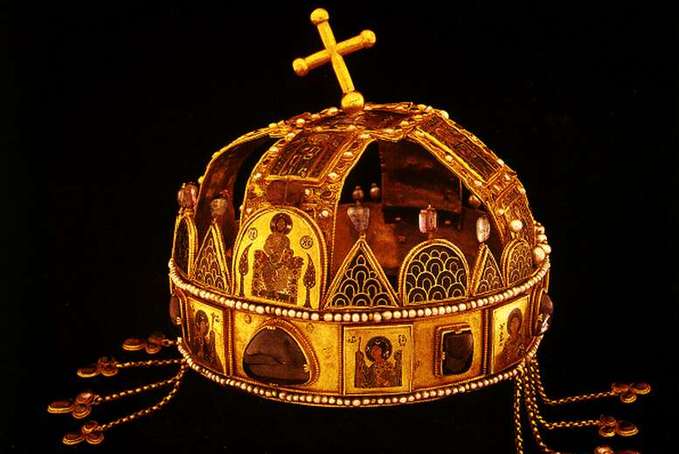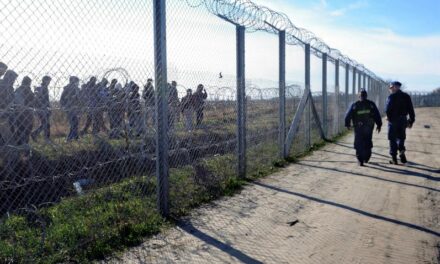A memorable moment in the history of the Holy Crown is the crown guard election in 1933, when Baron Zsigmond Perényi and Count Tibor Teleki were elected crown guards by popular vote.
Elected crown guard Zsigmond Perényi Báró said the following:
"Your Excellency the President, Gentlemen! Deeply t. Parliament! (Let's hear! Let's hear!) With deep respect, I thank my fellow Crown Guard and myself for the supreme decision of His Excellency, the Lord Governor, for deigning to nominate us for the dignity of Crown Guard. And we gratefully thank both Houses of the National Assembly assembled for the honor of electing us. Nowadays, the guarding of the Crown is not as important as it was in the past, when our ancestors guarded and defended it in castles during hostile wars. But we still do not consider the guarding of the Crown to be a mere formality, an ornament that does not mean an obligation. We want to preserve and nurture those sacred noble traditions that are linked to the Holy Crown, (Correction) the great idea of national unity and belonging.
Even under the Árpáds, the main accessory of the royal power was the Holy Crown, and only the one who was crowned with the Crown was considered a legitimate king. From this, the specific Hungarian public law concept arose voluntarily, that the Holy Crown was the true source and symbol of the reign, the supreme power and right, the possession of the entire territory of the country (It is so! It is so!) and that the whole donating nobility was a member of the Holy For a crown. This formed the flow of his whole body: totum corpus sacrae coronae. Now, in our time, all Hungarians are equally members of the Crown, (That's right! That's right!) with the same rights, regardless of origin, wealth or religion. (That's right! That's right!) The only difference between us is in our obligations, (That's right! That's right!) because we want more from those who are stronger and richer. (That's right! That's right!)
Deeply t. Parliament! Throughout the centuries of Hungarian history, the Holy Crown was surrounded by a deep religious grace, Christian legends and chronicles proclaimed it, and believers believed with strong faith that the Crown was miraculously bestowed by the apostolic head of the church by divine inspiration and angelic intervention. We still believe the Crown is sacred. A dwarf people who do not look up to noble ideals with respect, who disregard their past (That's right! That's right!) and thus degrade themselves, their race. (That's right! That's right!) But a happy nation is, and only that nation has a future, which preserves the traditions and ideals of the past even in the midst of the storms of fate. (That's right! That's right!) Because the past is the solid foundation on which to build and ideals encourage work, struggle and sacrifice. The Holy Crown proclaims agreement, community, and peace among Hungarians. And when the time comes, in the spirit of our constitution, without external influence or coercion, by putting party and private interests aside, the universal nation will be called to realize the historic vocation of the Holy Crown. (Lively cheers.)
Deeply t. Parliament! Today, both houses of the National Assembly wore festive decorations, this decoration means deep respect for the Holy Crown, but it does not mean joy and celebration. Hungarians used to have a holiday of joy, and today we don't have a holiday either, (That's right! That's right!) because suffering and pain pervade this country. But we are not discouraged, because we trust in the just God (It is so! It is so!) and we know and believe that pain forges strong souls and great deeds. And if a new Hungarian life arises from the strong souls, then everything that today is a prayer, a desire and a will, will come true and blossom again in its old glory, the happy and glorious country of St. Stephen's crown. (Prolonged lively cheering and applause.)
László Almásy : T. Parliament! The ceremonial inauguration of the newly elected crown guards will take place this afternoon at 12:45 in the royal palace. I invite the upper house members and representatives assembled in the parliament to deign to march to this ceremony as a body."
This is how the last peacetime crown guard election took place. The next and last one happened already in 1942 during the World War...
In 1938, during the commemorative year of St. Stephen's jubilee, the Holy Crown was put on public display.
"As a symbol of the kingdom, the Holy Crown was last exhibited to the public in 1938, on the occasion of the commemorative year of Saint Stephen. At 8:30 a.m. on August 16, the head of Horthy's cabinet office, the prime minister, the state secretary of the prime minister's office, the secretary of the council of ministers, and the two crown guards appeared in the crown guard guard room next to the armory. The crown guard lined up, the commander and sub-commander of the crown guard appeared. After the report was made, the armory was opened, then the chest containing the crown and insignia was taken to the marble hall of the Castle Palace and placed on an ornate platform. The two crown guards sat in the armchairs placed on the platform, behind them stood the commander and deputy commander of the crown guard. Three members of the Crown Guard in full regalia stood guard on both sides of the platform. The public inspection lasted from 8 am to 8 pm on August 16-17, and from 9 am to 6 pm on the 19th. (It was paused on August 18, as the Crown Guards participated in the festive session of the Parliament in Székesfehérvár.)
During the three days of the public viewing, 88,000 people saw the crown. It was seen by the German and Italian military delegation staying in Budapest, Faruk of Egypt with her two daughters; Cardinal Pacelli prayed before him , the later XII. Pope Pius too. During the public inspection, the researchers could also conduct a shorter examination, but they were not allowed to use artificial light for photography, and they were not allowed to touch the crown with their hands. At the same time, the competent specialists also took measurements for the production of the new crown case and cases.
István Petrás took photographs of our national relic. At 6:00 p.m. on August 19, 1938, the crown and the coronation badges were returned to their safekeeping places by the same people who were present at the exception three days earlier. The silk tapestry covering the casket was sealed with the seals of the governor, the prime minister, the two crown guards and the secretary of the council of ministers. The iron chest and the chest containing the coronation robes were then returned to the vault. The crown guard saluted with weapons, and the prime minister and the two crown guards closed the chamber."
Author: Zsolt Zétényi












